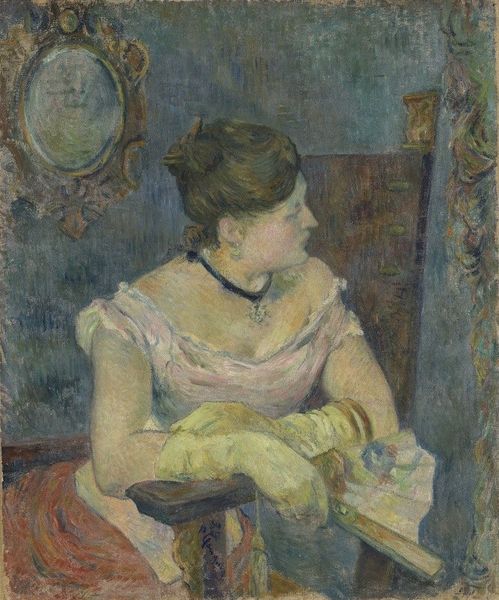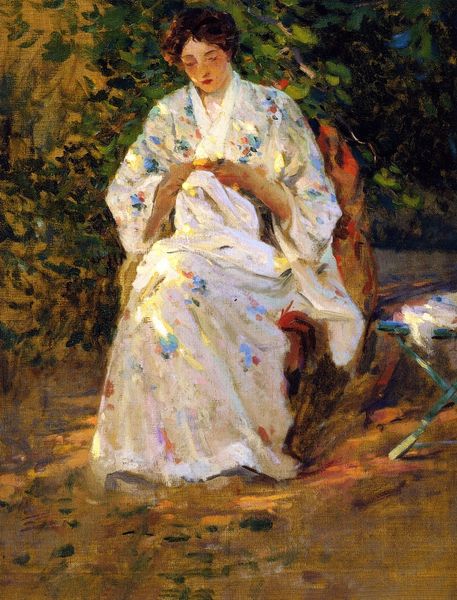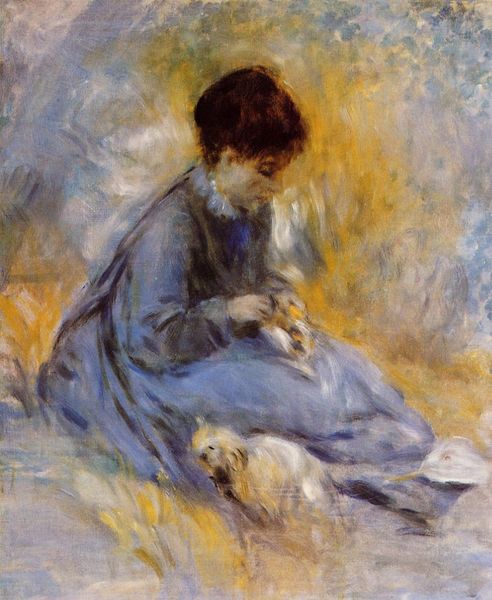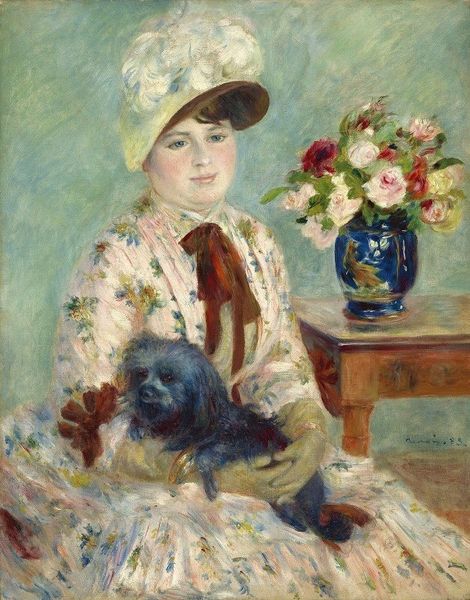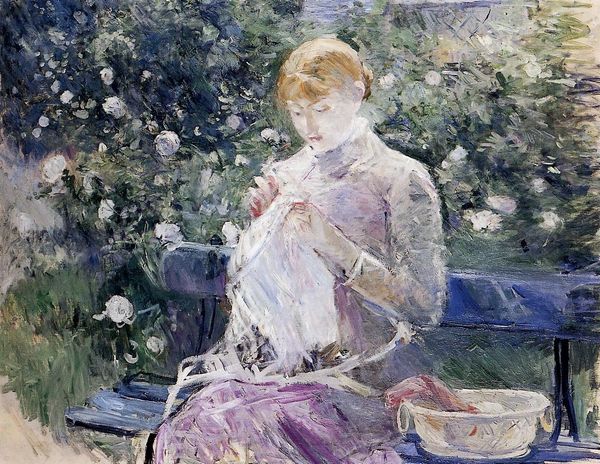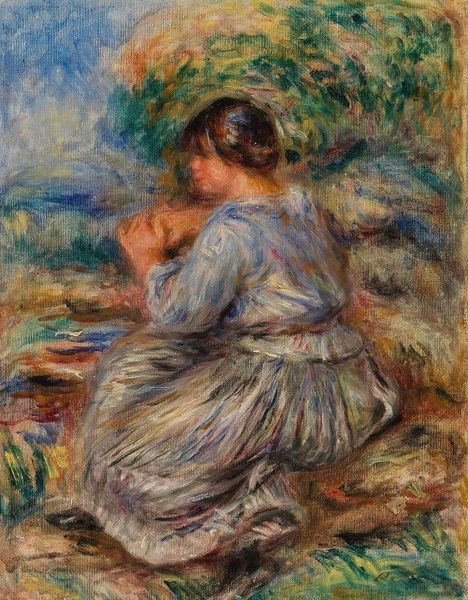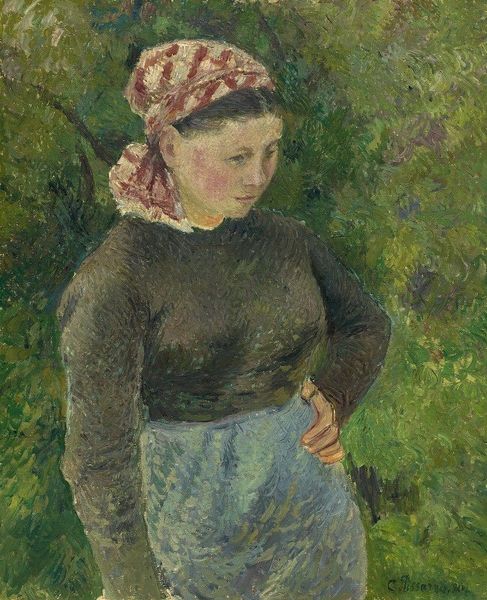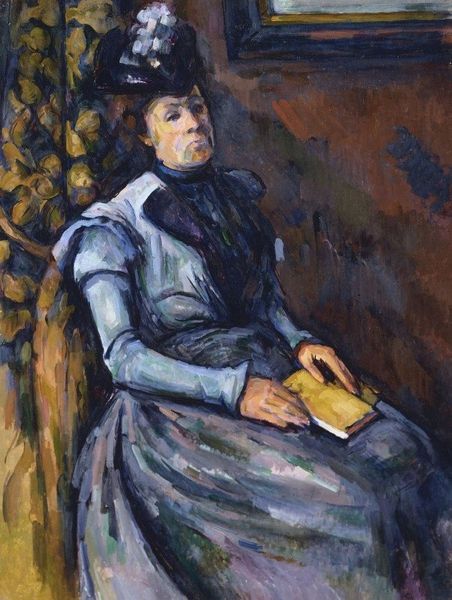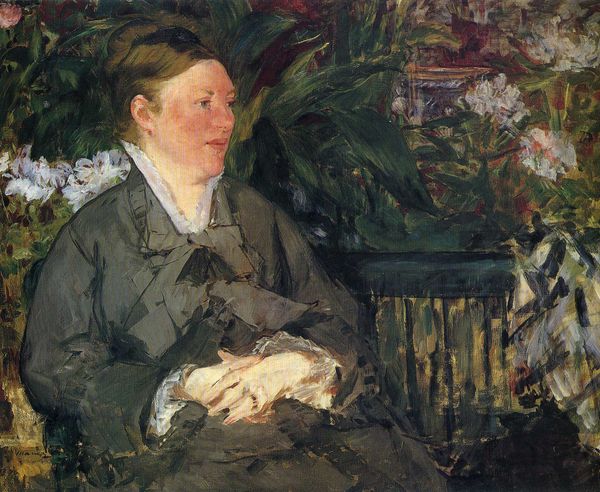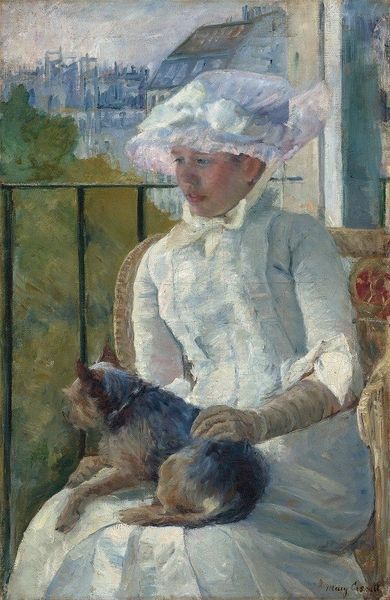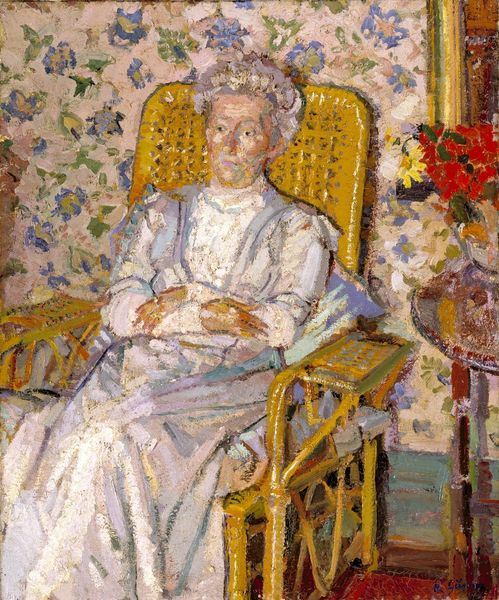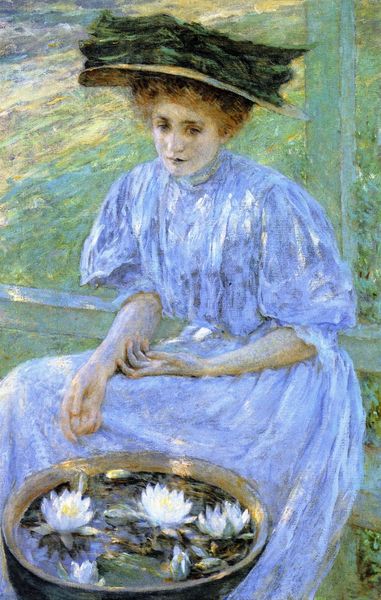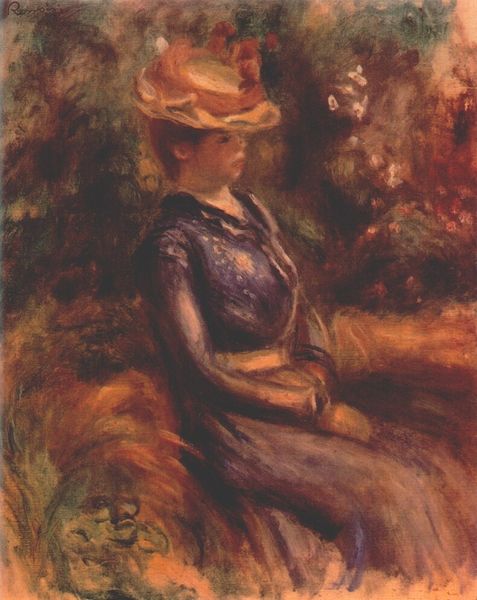
Copyright: Public Domain: Artvee
Curator: Welcome. Before us hangs Camille Pissarro’s “Julie Pissarro au jardin,” painted in 1874. Editor: My first impression is one of profound stillness. There’s something very private and calm about the subject, seated within the dappled shadows of a garden. Curator: Indeed. The painting invites reflections on the gendered nature of leisure and domesticity in 19th-century bourgeois life. We might consider the expectations placed upon women of that era and how their roles were often confined to the domestic sphere. Editor: Absolutely, and considering Pissarro’s application of oil paint and working 'en plein air,' we see an interesting relationship develop between production and social values. How might his outdoor method impact the subject, her work and life experiences? Curator: Good question. In Julie’s expression and posture, can we perhaps read not contentment, but resignation to a pre-ordained existence? Pissarro wasn't merely representing a scene; he was capturing the nuanced power dynamics and emotional constraints inherent in his model's reality. Editor: It's interesting to note how Pissarro chose to work in visible, almost crude strokes in service to quickly render form with light. By emphasizing this application of raw materials, doesn’t it point to a tension of artistic value set against his rendering of everyday labor and material experience? Curator: Precisely. It brings the question to the viewer: are we just spectators observing the picturesque scene of someone else’s reality, or are we compelled to consider the structural imbalances that make that scene possible? The materiality allows one to explore labor questions, and her position underscores those structural issues. Editor: Examining this artwork closely brings me to question how the very act of painting landscapes ‘en plein air’ contributed to a construction of leisure, both for the artist and those depicted, through their physical connection to, and interaction with, raw elements. Curator: Thinking about all of this only underlines the continued relevance of these artworks in questioning, analyzing, and ultimately dismantling harmful paradigms. Editor: It also points towards how laboring methods like the Impressionists' material processes themselves contribute meaning.
Comments
No comments
Be the first to comment and join the conversation on the ultimate creative platform.
